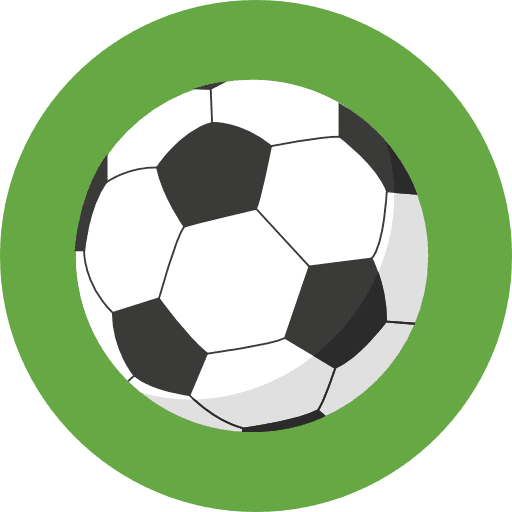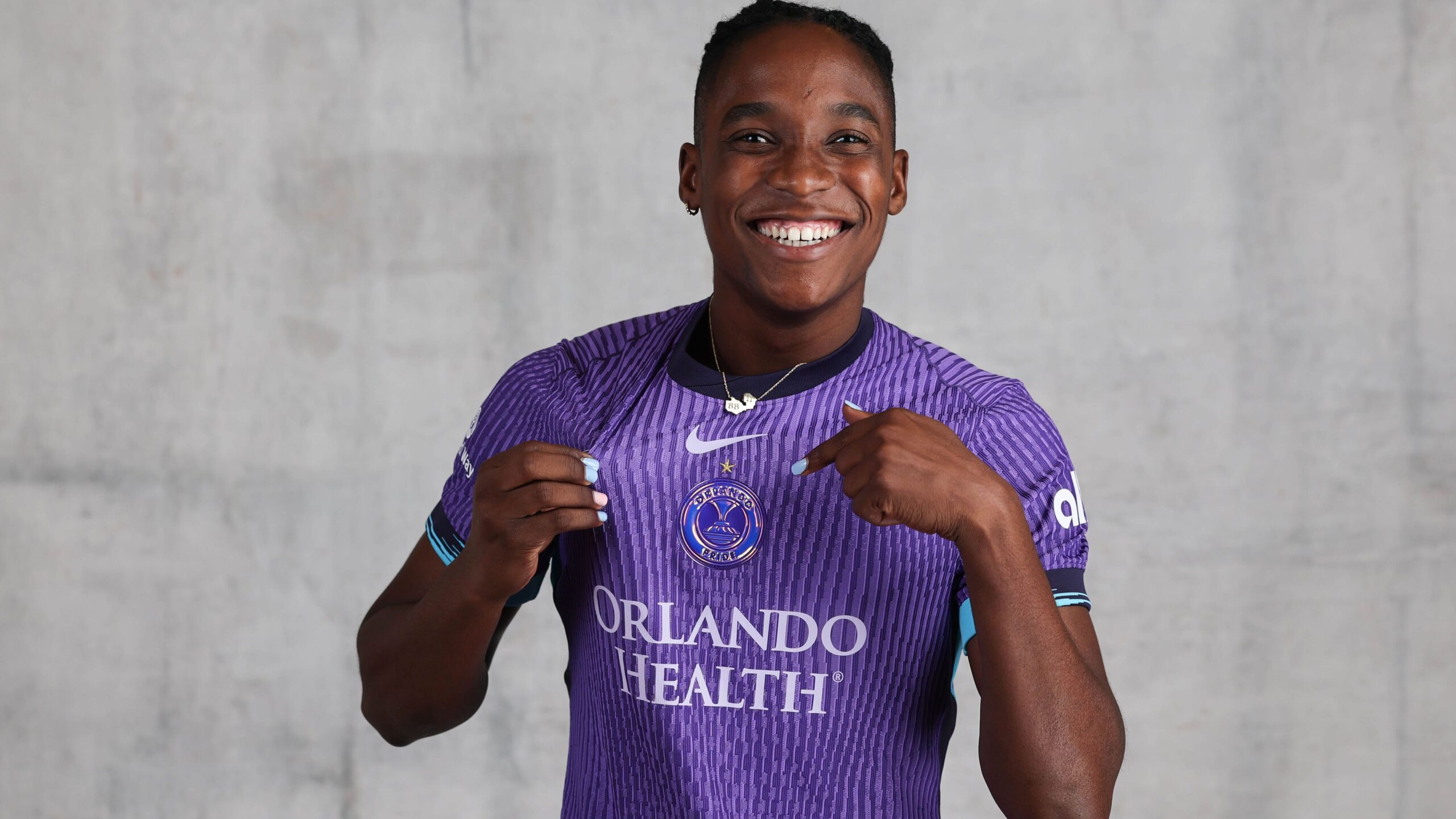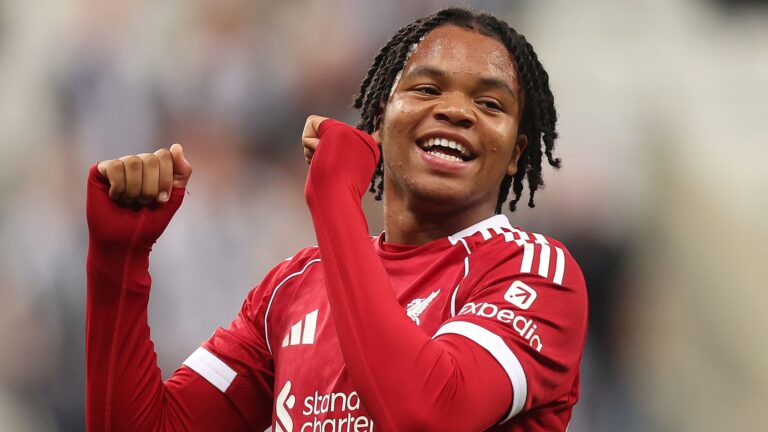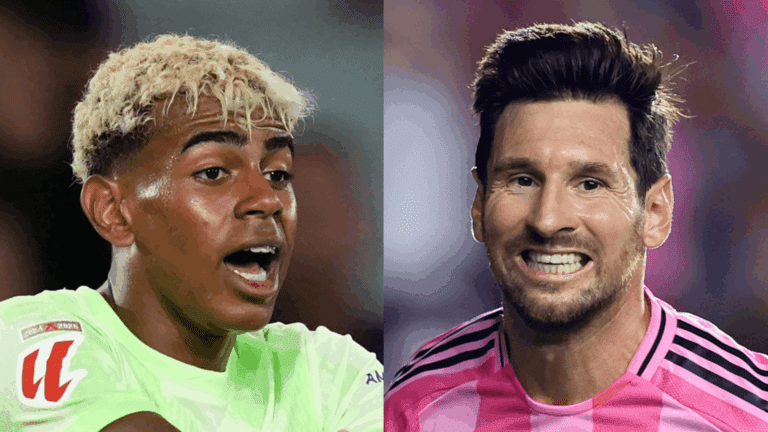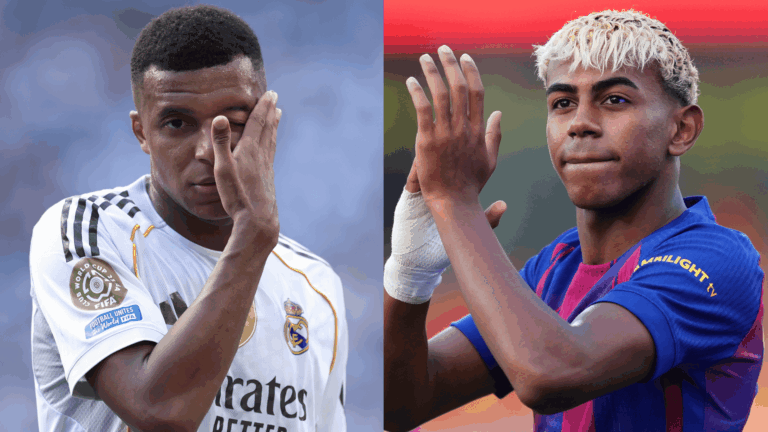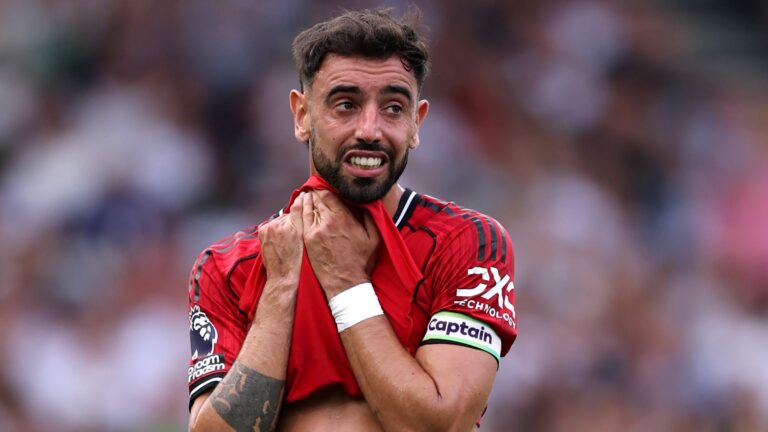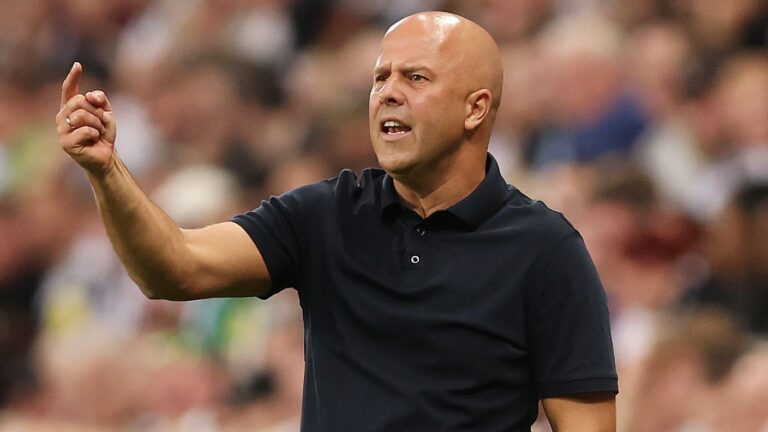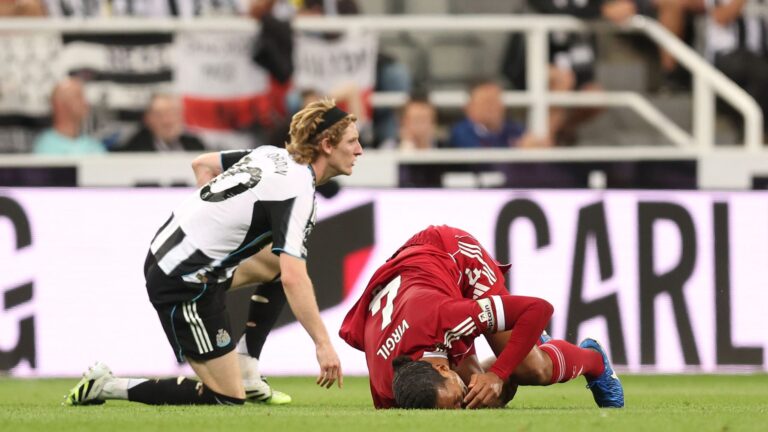Orlando Pride Star Barbra Banda Faces Season-Ending Adductor Tendon Challenge
In a major blow to the Orgullo de Orlando and women’s soccer enthusiasts, star forward Barbra Banda has been sidelined for the rest of the season due to a severe adductor tendon injury. This setback underscores the physical demands of the Liga Nacional de Mujeres and highlights Banda’s pivotal role in driving her team’s offensive prowess, leaving fans and teammates alike reflecting on her remarkable contributions to date.
- Barbra Banda suffered a tear in her right adductor tendon during the August 16 matchup
- As Orlando’s top goal scorer, she tallied eight impressive goals
- She earned MVP honors in the previous year’s NWSL campeonato finale



Details of the Injury and Its Impact on Orlando Pride
Officials from the Orlando Pride have revealed that their standout striker, Barbra Banda, is now on the injured reserve list after experiencing a complete rupture of her right adductor longus tendon. This occurred in the thick of action during a heated game against the Kansas City Current on August 16, forcing an abrupt halt to her dynamic season.
Zambian Striker’s Season Performance
Banda, hailing from Zambia, has proven herself as a formidable attacking threat for the Orlando team. Throughout this season, she’s managed to score eight goals across 17 outings, helping propel the squad to their current standing of 8-4-5 and 28 points in the NWSL rankings. To put this in perspective, imagine a key player in a symphony orchestra suddenly missing-Banda’s goals have been the harmonious notes driving the team’s melody forward.
Statement from Pride Leadership
Pride’s Vice President of soccer operations and sporting director, Haley Carter, expressed profound disappointment in a public statement. “It’s with heavy hearts that we confirm Barbra Banda’s placement on the injured reserve following her recent soft-tissue damage in the game versus Kansas City Current. Barbra has been a cornerstone of our achievements, and her absence is a tough pill for the whole club to swallow.”
Carter went on to emphasize the organization’s dedication: “We’re fully invested in giving her top-tier medical support and encouragement during recovery. The way she’s influenced this group, both in matches and beyond, is invaluable, and we’re confident she’ll tackle rehab with the same grit and dedication she shows on the field.” This reflects a shift from mere disappointment to a forward-looking commitment, akin to a coach rallying the team after a loss.
Broader Implications for the Team’s Playoff Push
With Banda out, the Orlando Pride must navigate a substantial gap in their forward line as they aim for a strong postseason in the NWSL. At just 25 years old, she’s rapidly become one of the league’s elite scorers since joining, amassing 25 goals and seven assists over 41 appearances, along with nods for two Ballon d’Or awards. For context, her scoring rate is comparable to a race car’s top speed-swift and consistent-making her loss feel like losing a high-performance engine mid-race. Recent NWSL statistics show teams without their leading scorers often drop by an average of 15% in offensive output, underscoring the challenge ahead for Orlando.
Recovery Plan and Support System
Moving forward, Banda will collaborate closely with the Orlando Pride’s health experts and affiliates at Orlando Health to craft a thorough plan for healing and getting back in shape. This structured approach aims to ensure her full recovery, allowing her to return stronger and continue her ascent in professional soccer.
Who is Barbra Banda and Her Impact on Orlando Pride?
Barbra Banda has quickly become one of the most exciting stars in women’s soccer, particularly for the Orlando Pride in the NWSL. Originally from Zambia, Banda’s journey to prominence is inspiring, marked by her exceptional goal-scoring ability and dynamic playstyle. Since joining Orlando Pride, she’s been a key player, helping the team climb the ranks with her impressive performances. An adductor tendon injury might sideline her for the rest of the season, which is a significant blow to both the team and her fans.
Banda’s career highlights include setting records in international tournaments and earning accolades that showcase her talent. For instance, during the 2020 Tokyo Olympics, she made headlines for her hat-trick against Porcelana, proving why she’s a force to be reckoned with. With the Orlando Pride adductor tendon injury announcement, supporters are left wondering how the team will adapt without their star forward’s speed and precision on the field.
Key Achievements of Barbra Banda
– Scored multiple hat-tricks in high-stakes matches, including at the Olympics.
– Named African Women’s Footballer of the Year, highlighting her global influence.
– Contributed significantly to Orlando Pride’s defensive and offensive strategies since her arrival.
Understanding Adductor Tendon Injuries in Soccer
Adductor tendon injuries are common in sports like soccer, where sudden changes in direction, sprinting, and kicking put immense strain on the groin area. For athletes like Barbra Banda, who rely on explosive movements, this type of injury can be particularly devastating, often leading to a season-ending status. The adductor tendons connect the inner thigh muscles to the pelvis, and when they tear or become inflamed, it can cause severe pain and mobility issues.
In Banda’s case, the Orlando Pride medical team likely diagnosed the injury through a combination of physical exams and imaging tests like MRIs. Early detection is crucial for adductor tendon injury recovery, as prolonged strain can worsen the damage. According to sports medicine experts, these injuries often result from overuse or acute trauma during games, emphasizing the physical demands of professional soccer.
Symptoms and Immediate Effects
Athletes experiencing an adductor tendon injury might notice:
– Sharp pain in the groin or inner thigh.
– Swelling and bruising around the affected area.
– Difficulty walking or performing basic movements, which can immediately impact training and matches.
For Barbra Banda, being placed on the season-ending injury list means she’ll miss crucial games, potentially affecting Orlando Pride’s playoff chances and overall NWSL standings.
Impact of Barbra Banda’s Injury on Orlando Pride and Beyond
The news of Barbra Banda’s adductor tendon injury has rippled through the NWSL community, with fans and analysts discussing how Orlando Pride will cope without her. As a top scorer and team leader, her absence could shift dynamics on the field, forcing other players to step up. Teams often face challenges when a star like Banda is out, but it’s also an opportunity for depth players to shine.
This injury highlights the unpredictable nature of professional sports, where even the fittest athletes can face setbacks. Orlando Pride’s management might need to adjust strategies, perhaps relying more on midfield control or defensive tactics to compensate for the loss of Banda’s offensive prowess.
Experiencias de primera mano en situaciones similares
Drawing from first-hand accounts of other athletes, like England‘s Ellen White who dealt with groin issues, we see that recovery isn’t just physical but mental. White shared in interviews how she focused on rehabilitation to return stronger, which could inspire Banda. Similarly, U.S. soccer star Megan Rapinoe has spoken about overcoming injuries, stressing the importance of a strong support system.
Recovery Process and Practical Tips for Adductor Tendon Injuries
While Barbra Banda’s adductor tendon injury recovery will be tailored to her needs, it typically involves rest, physical therapy, and gradual strengthening exercises. Sports doctors often recommend a phased approach: initial rest to reduce inflammation, followed by targeted rehab to rebuild strength. For athletes, getting back to full fitness might take several months, making this a true season-ending scenario.
One of the benefits of modern sports medicine is the array of tools available, such as platelet-rich plasma (PRP) therapy or ultrasound-guided injections, which can accelerate healing. Banda’s team at Orlando Pride will likely prioritize these to ensure a safe return.
Practical Tips for Preventing and Managing Injuries
If you’re an aspiring soccer player or even a recreational athlete, here are some practical tips to avoid adductor tendon injuries:
– Incorporate dynamic stretching and warm-ups before every session to prepare muscles.
– Strengthen your core and lower body with exercises like squats and lunges to support the adductors.
– Listen to your body; if you feel persistent pain, consult a professional rather than pushing through.
– Maintain a balanced training schedule to prevent overuse, which is a common cause in high-level sports like the NWSL.
Engaging in cross-training activities, such as swimming or cycling, can also provide benefits by allowing you to stay fit without straining the injured area.
Case Studies: Other Athletes Who Overcame Similar Injuries
Looking at case studies from the world of soccer and beyond offers valuable insights. For example, Liverpool‘s Mohamed Salah recovered from a similar adductor issue through intensive rehab, returning to top form. In women’s soccer, Germany‘s Alexandra Popp bounced back from a groin injury to lead her team in major tournaments. These examples show that with proper care, athletes like Barbra Banda can make a full recovery.
In one study published in the British Journal of Sports Medicine, athletes with adductor tendon injuries who followed a structured rehab program returned to play in an average of 12 weeks. This reinforces the importance of patience and expert guidance, which Banda will undoubtedly receive from Orlando Pride’s staff.
As fans await updates on Barbra Banda’s progress, it’s clear that her adductor tendon injury is more than just a setback-it’s a reminder of the resilience required in professional sports. With the right approach, she could come back even stronger next season.
